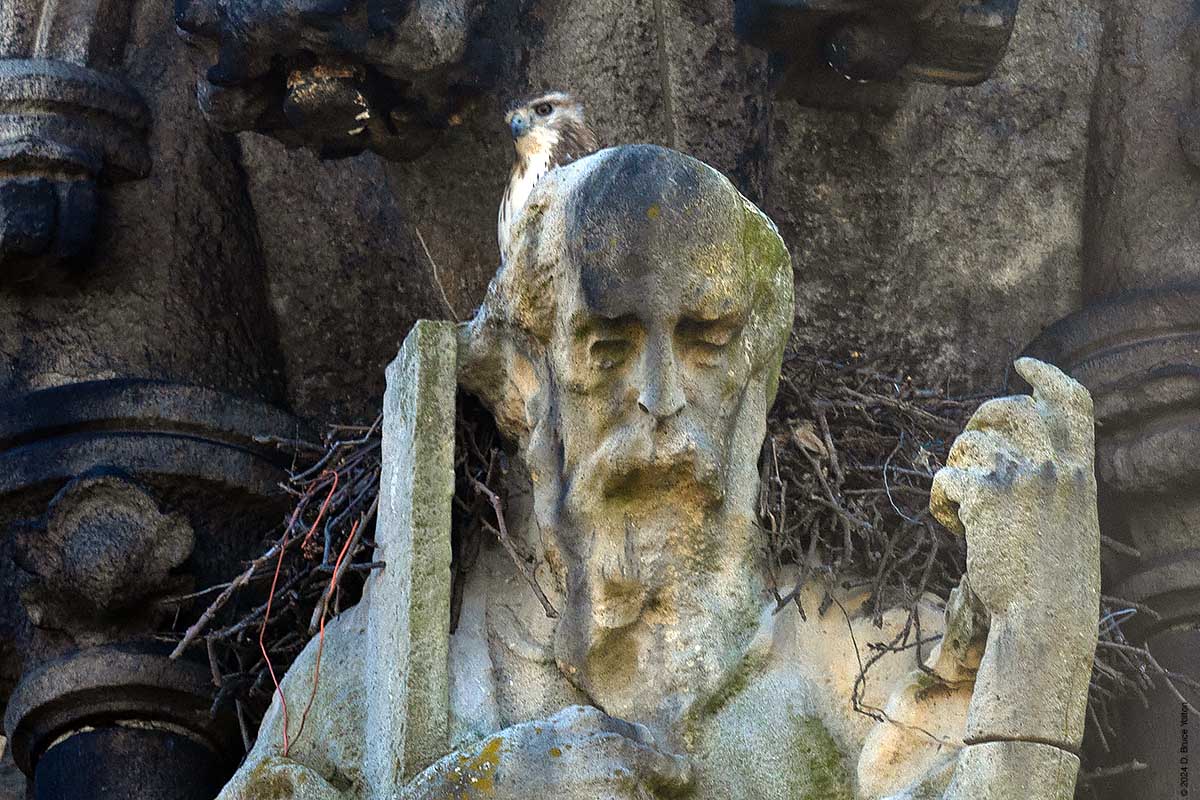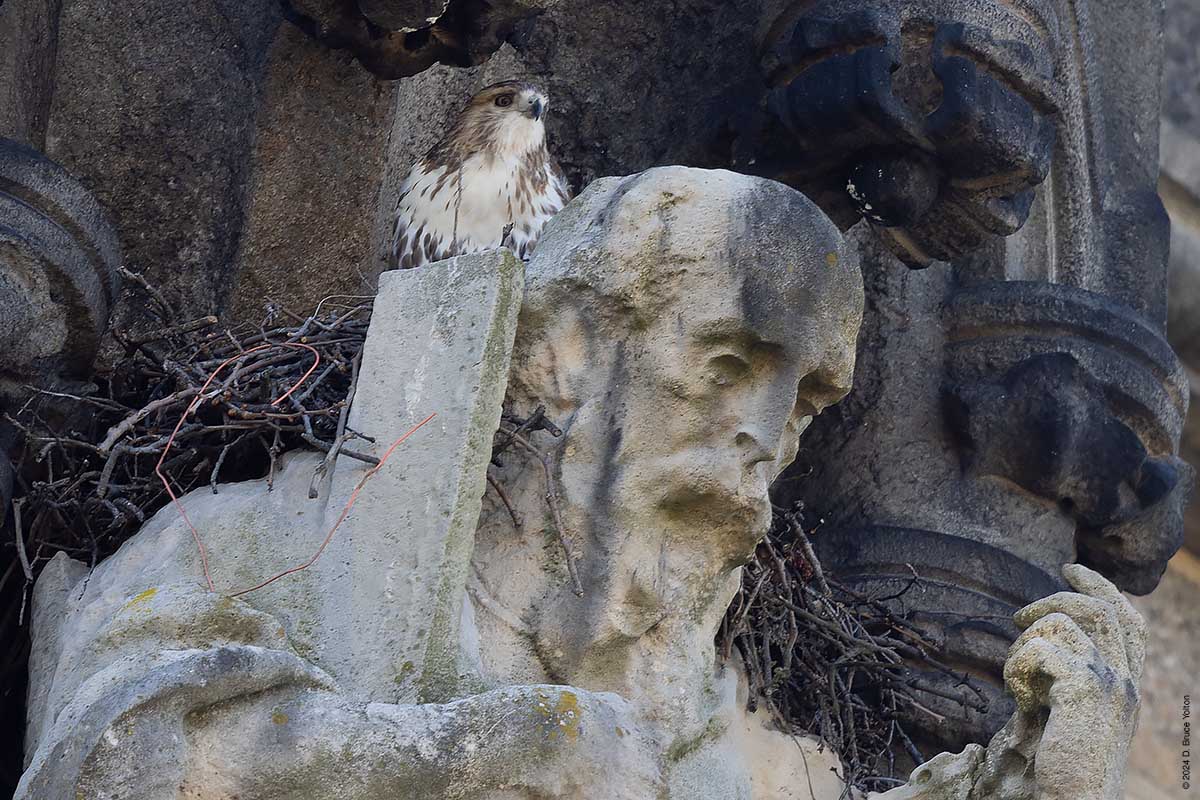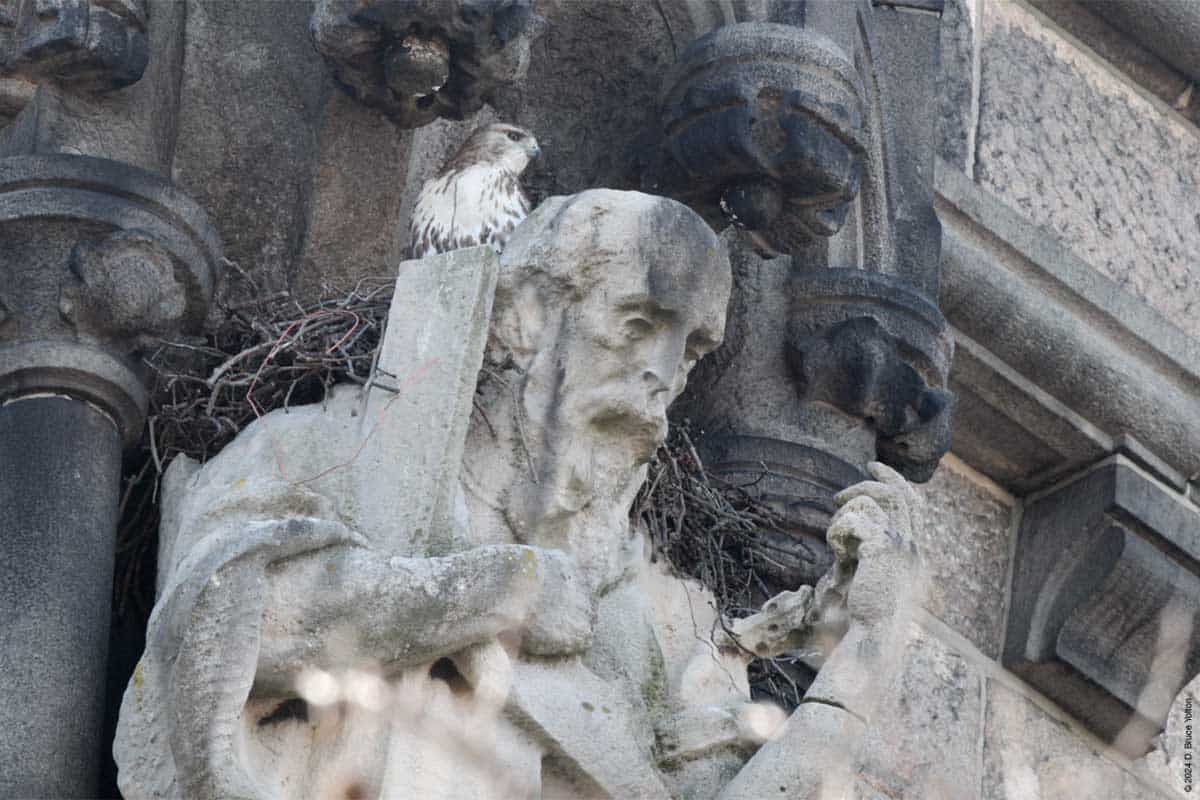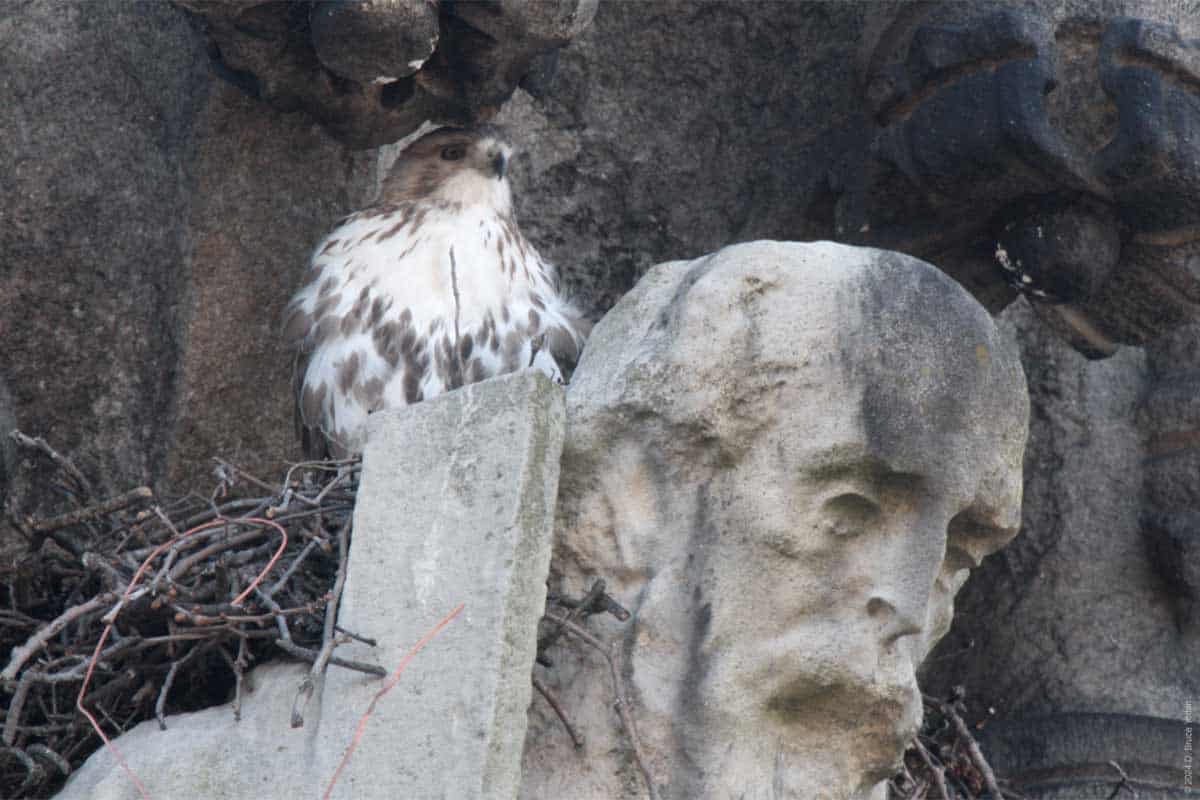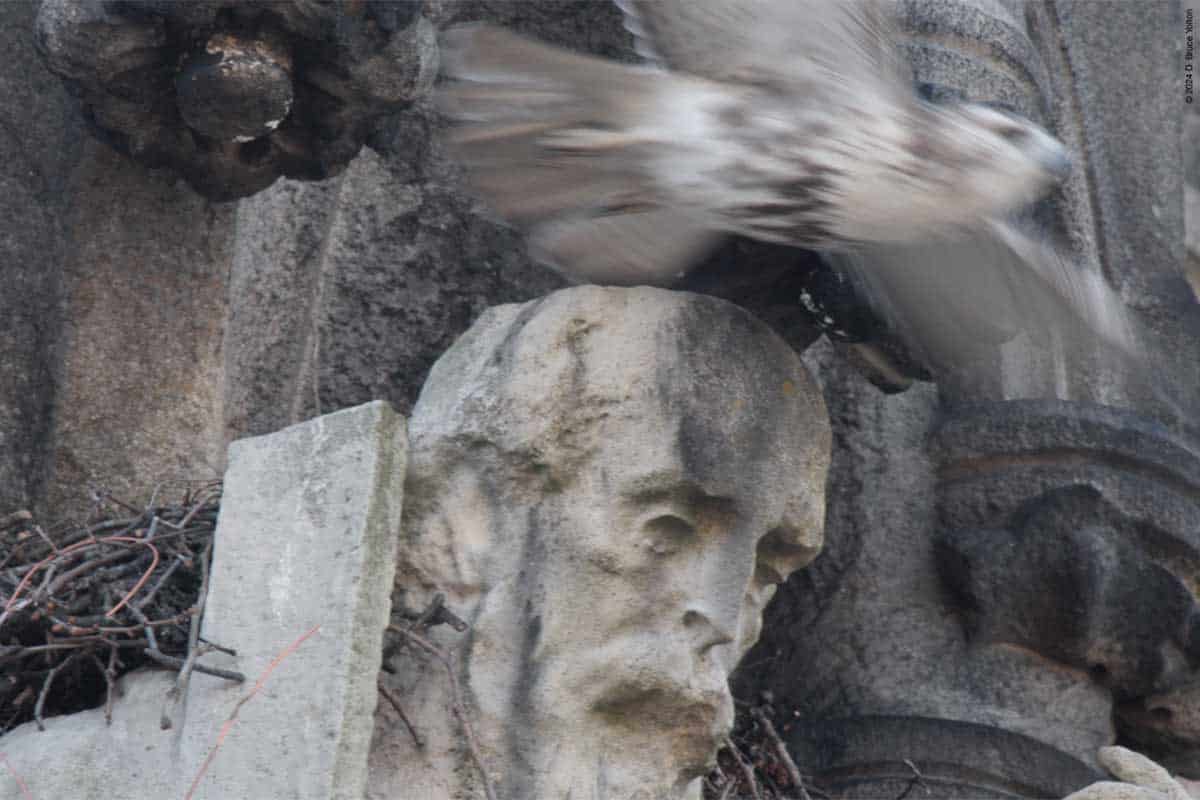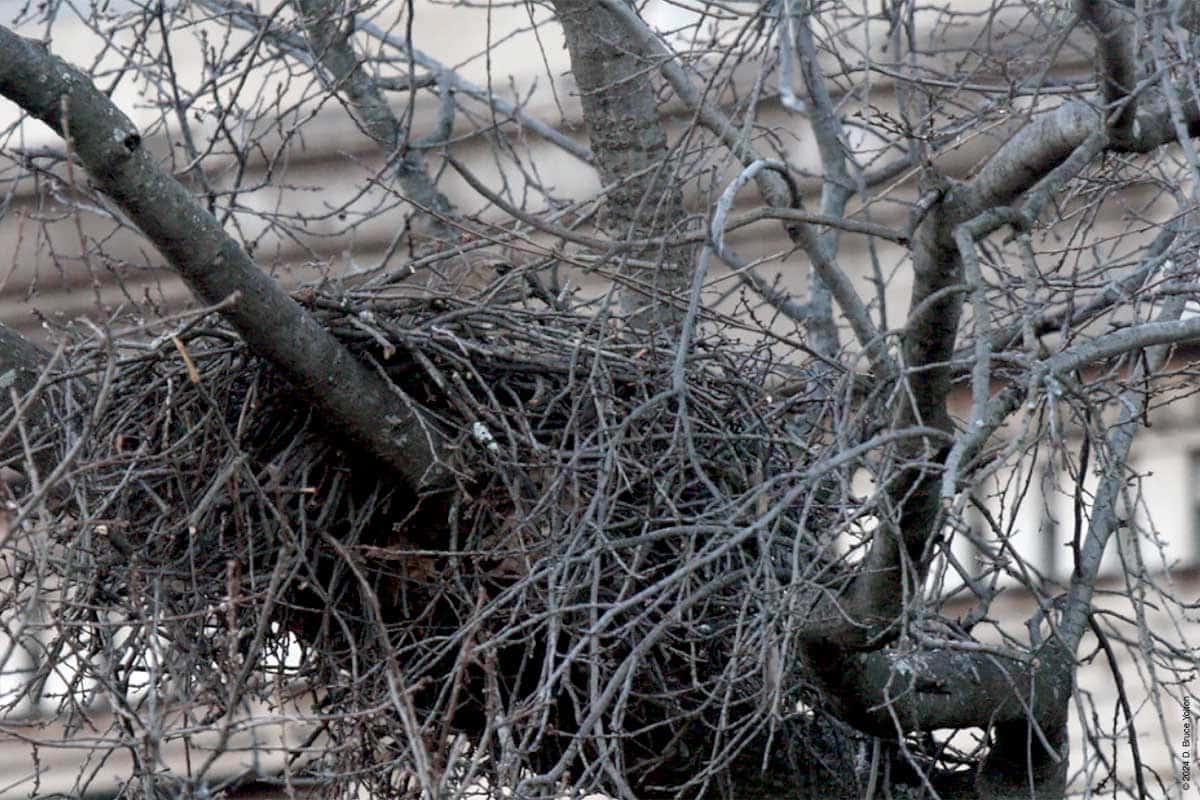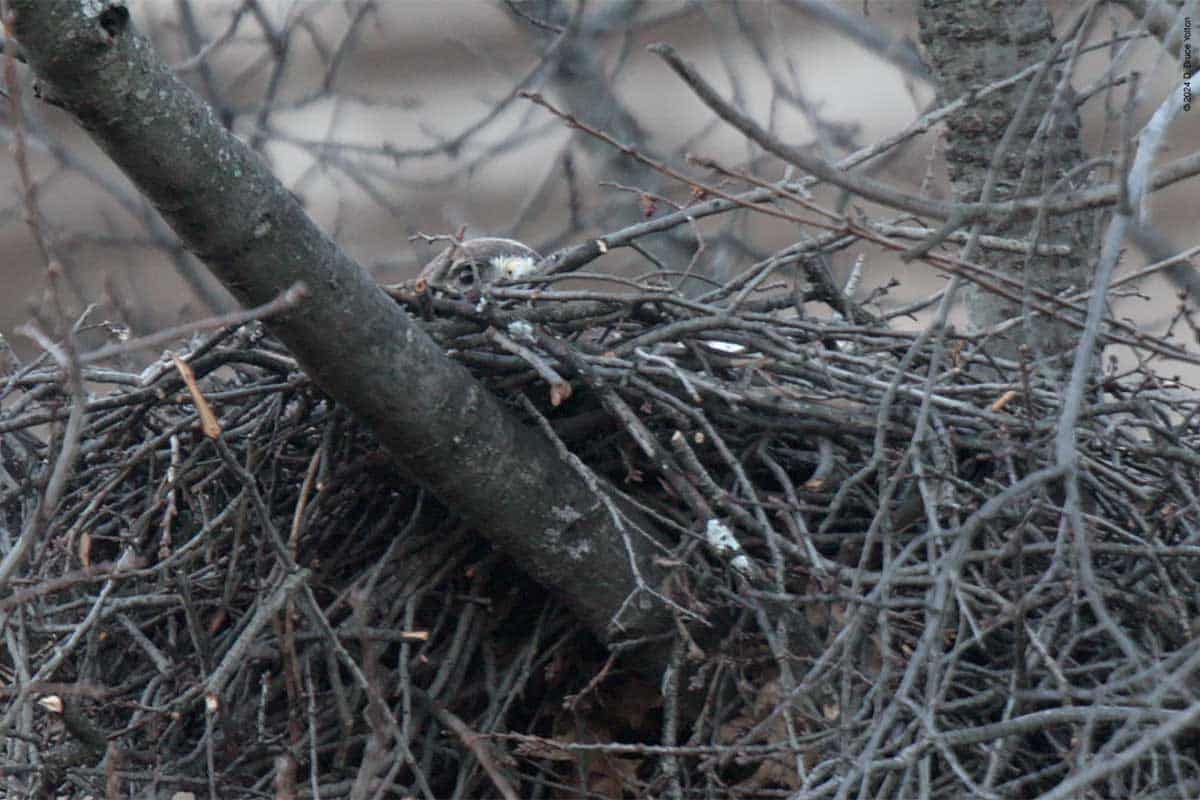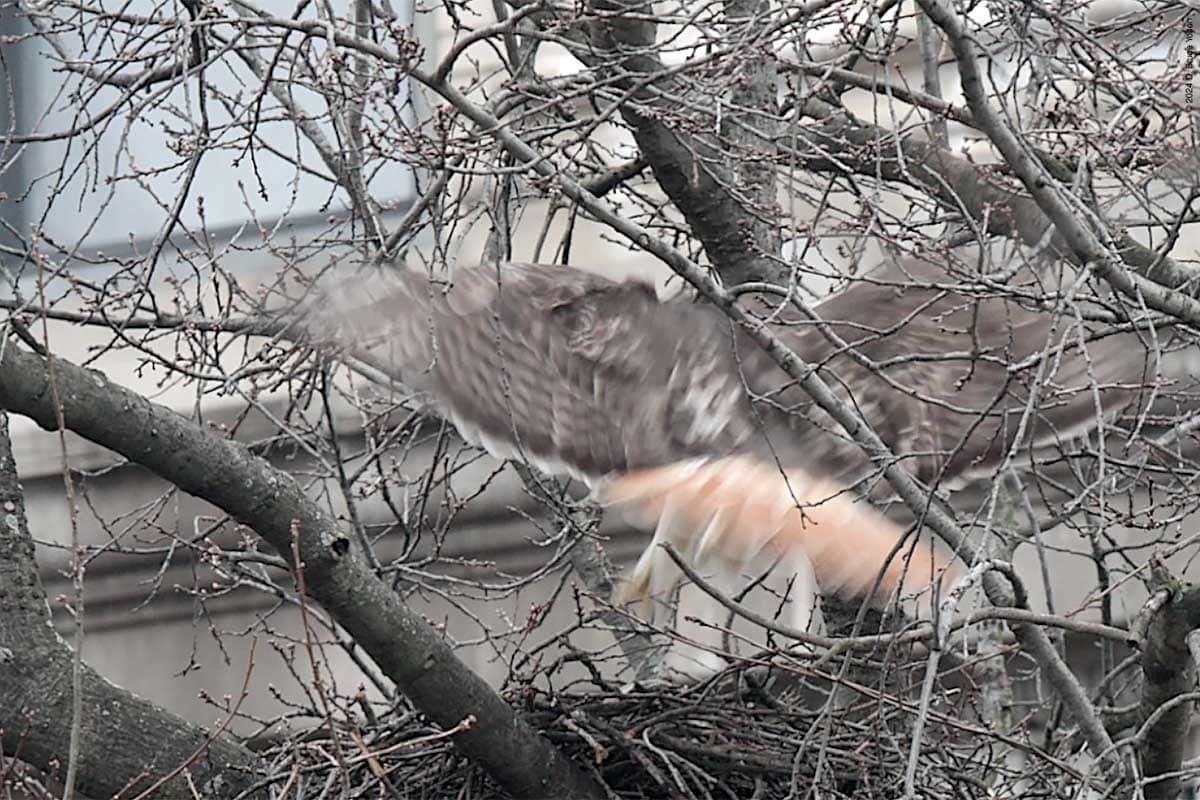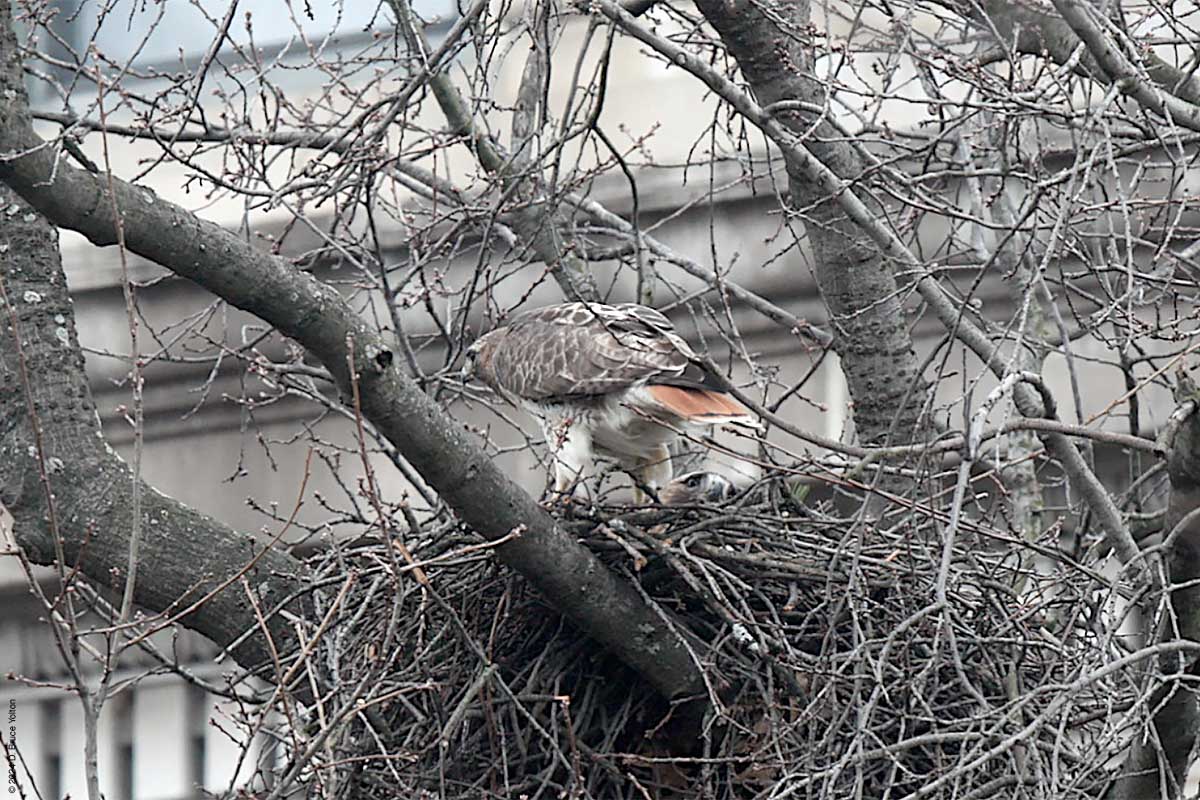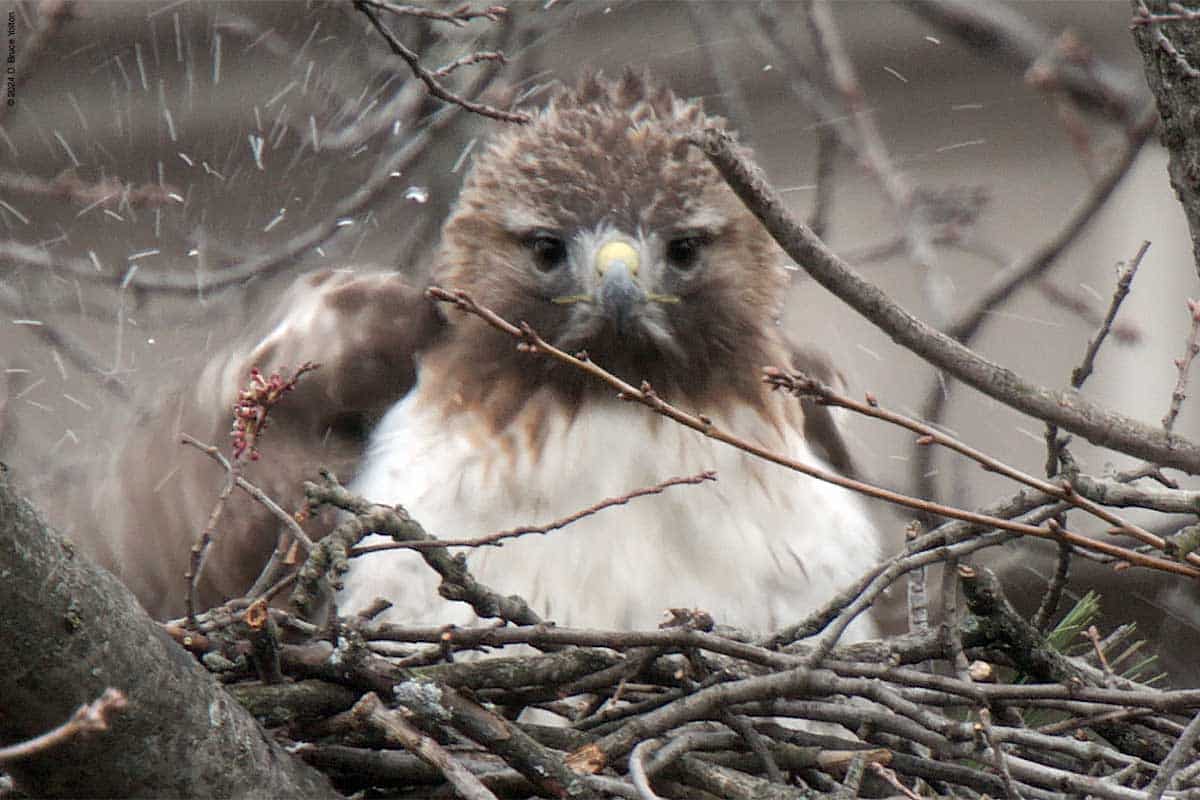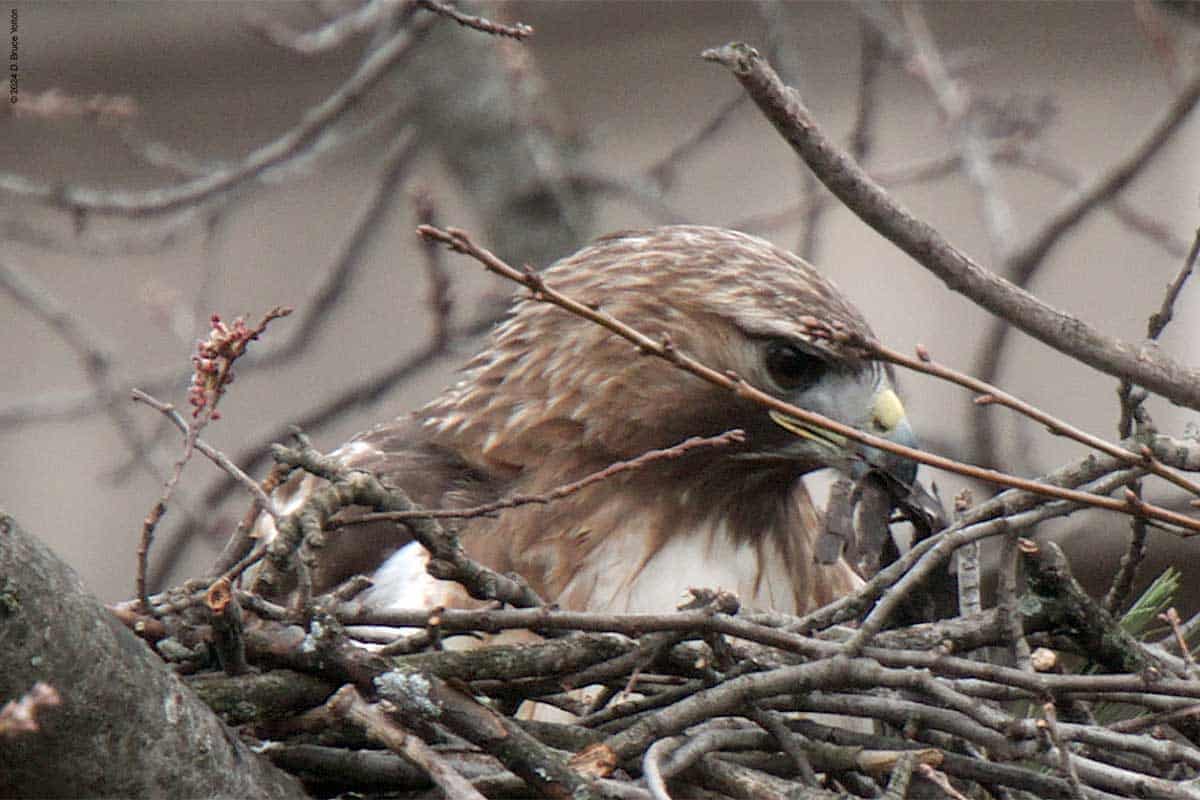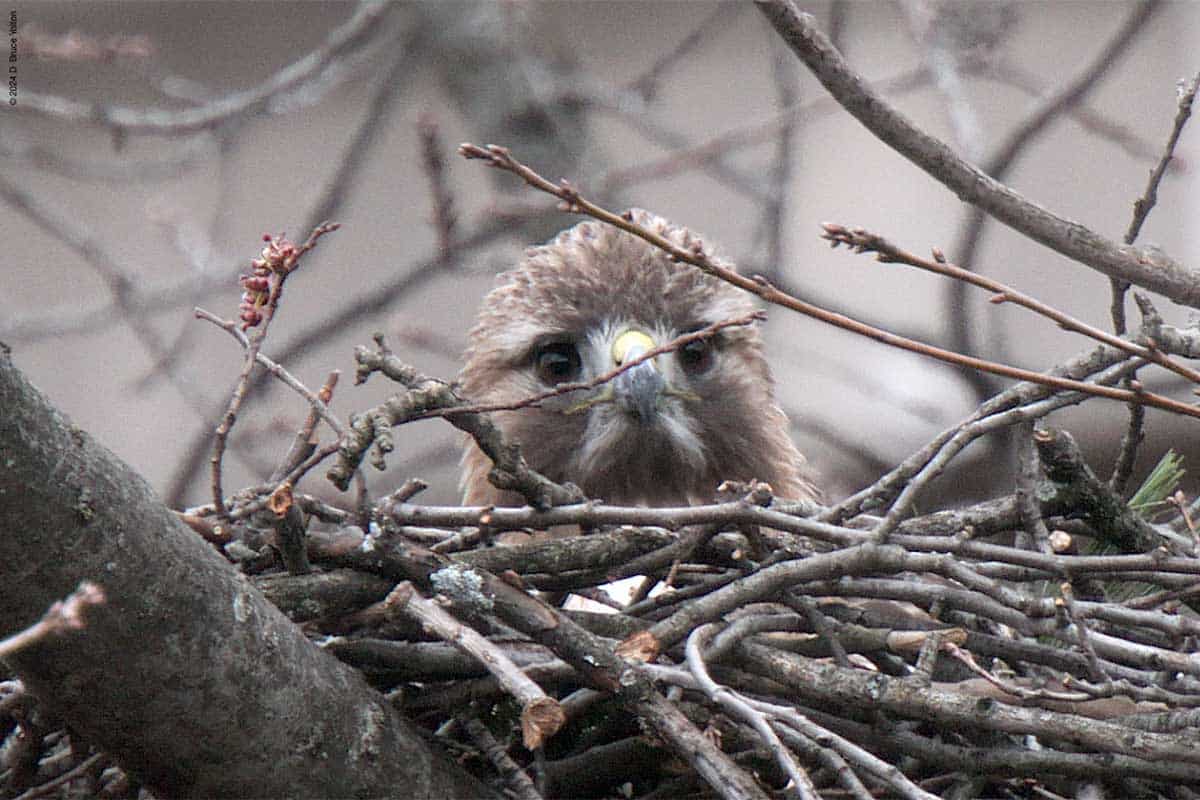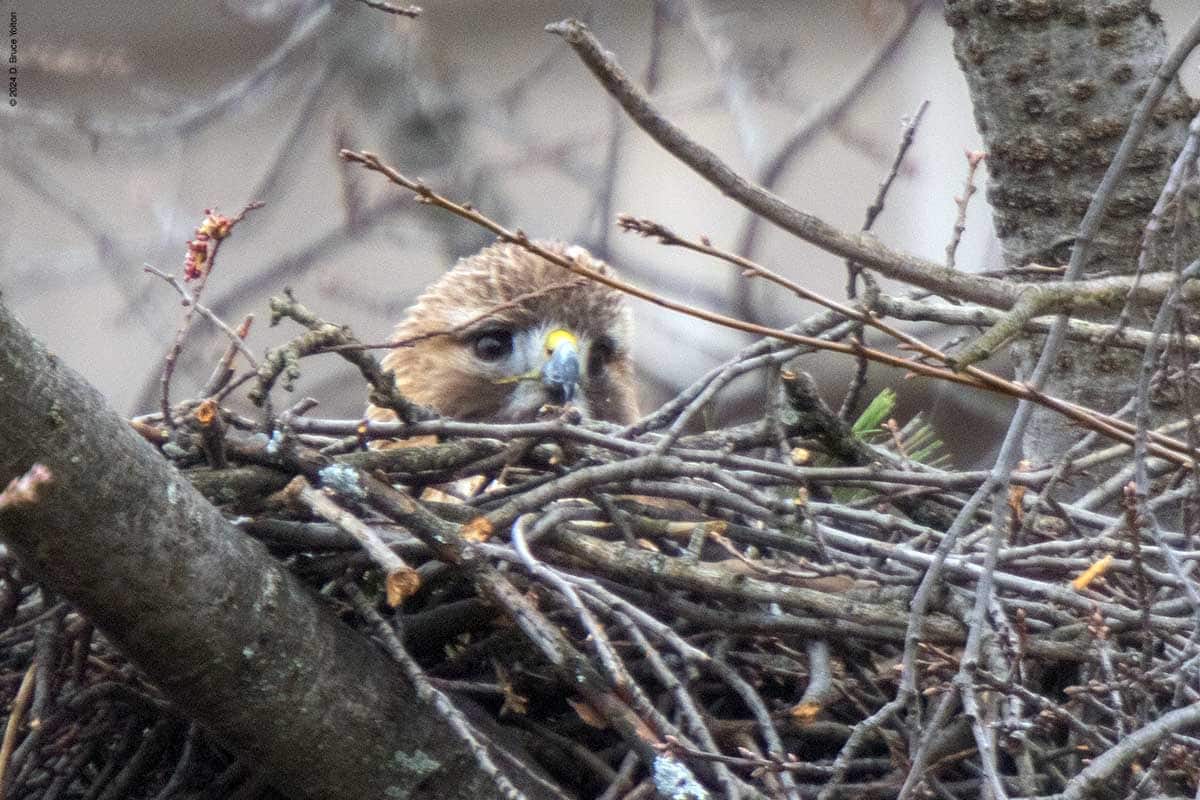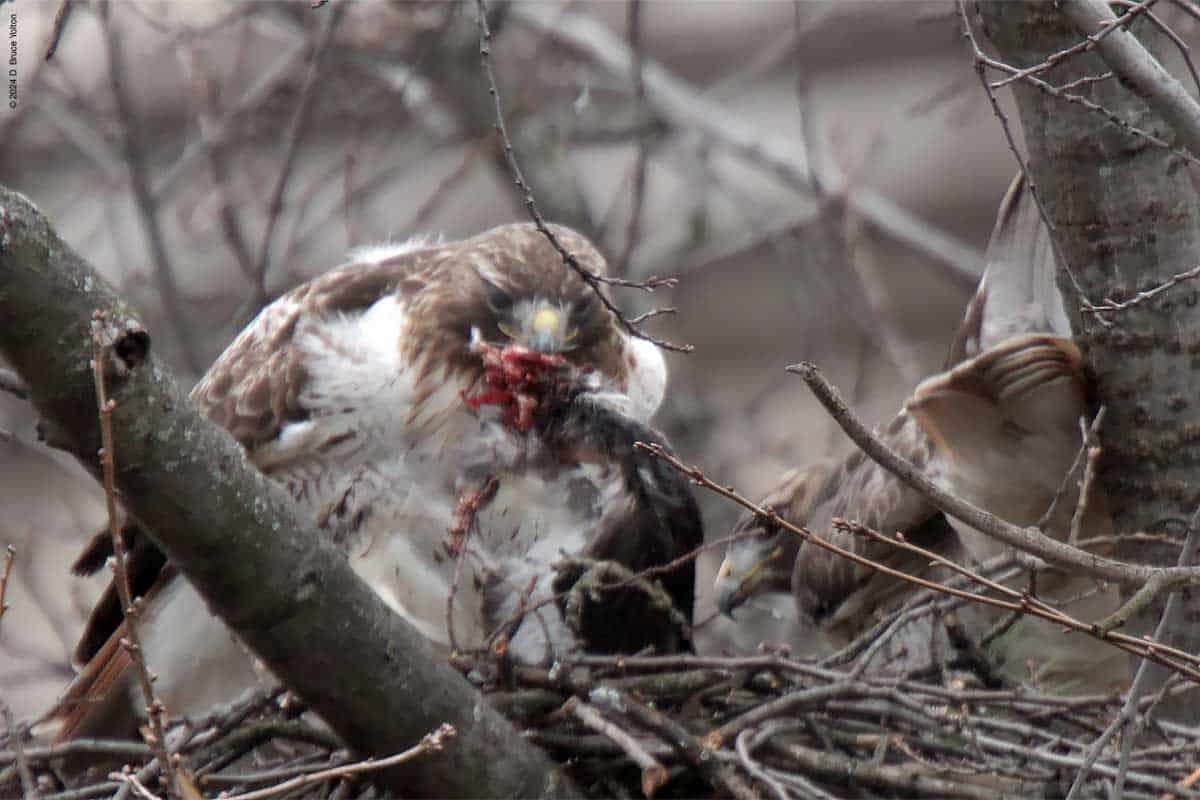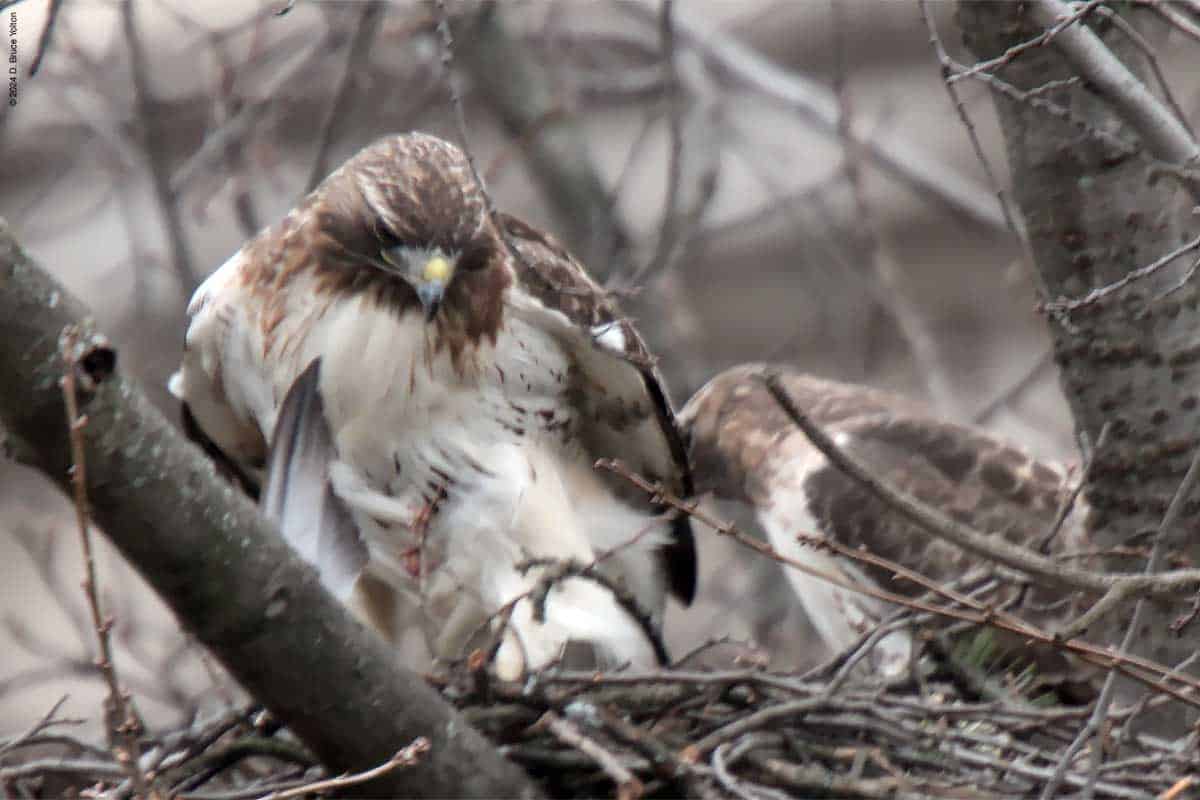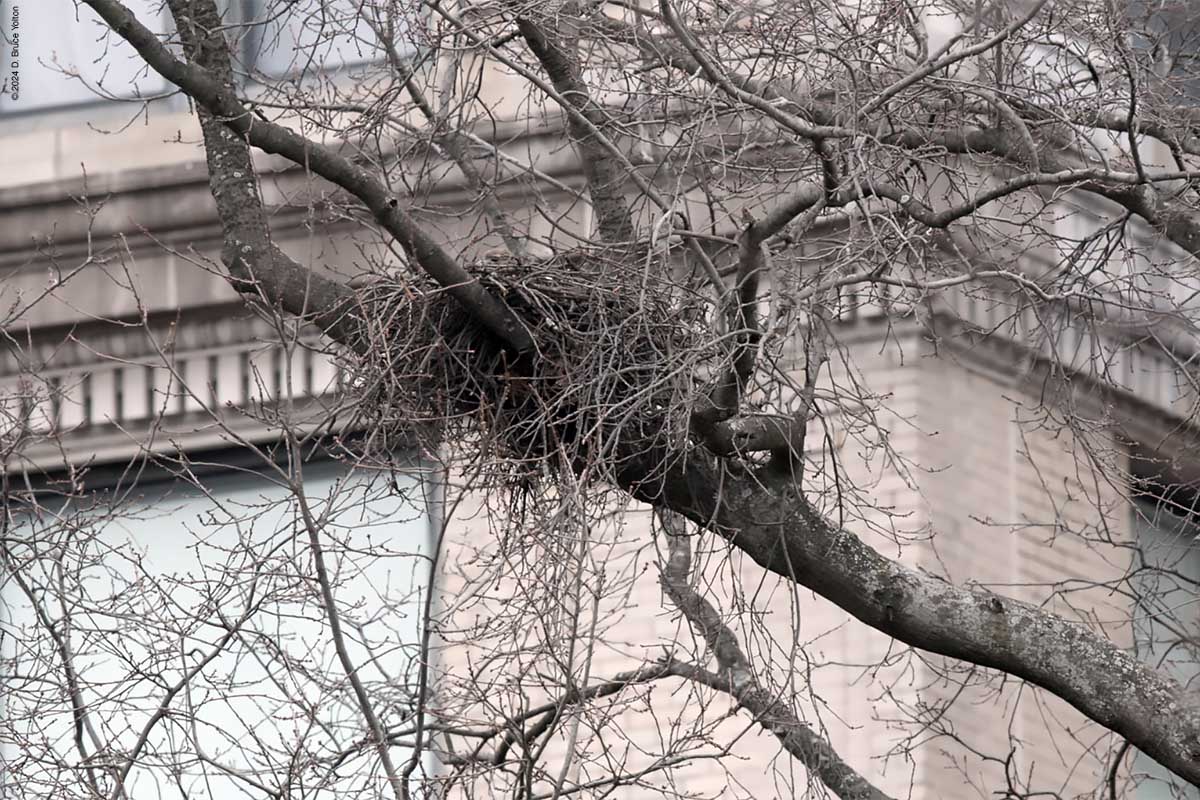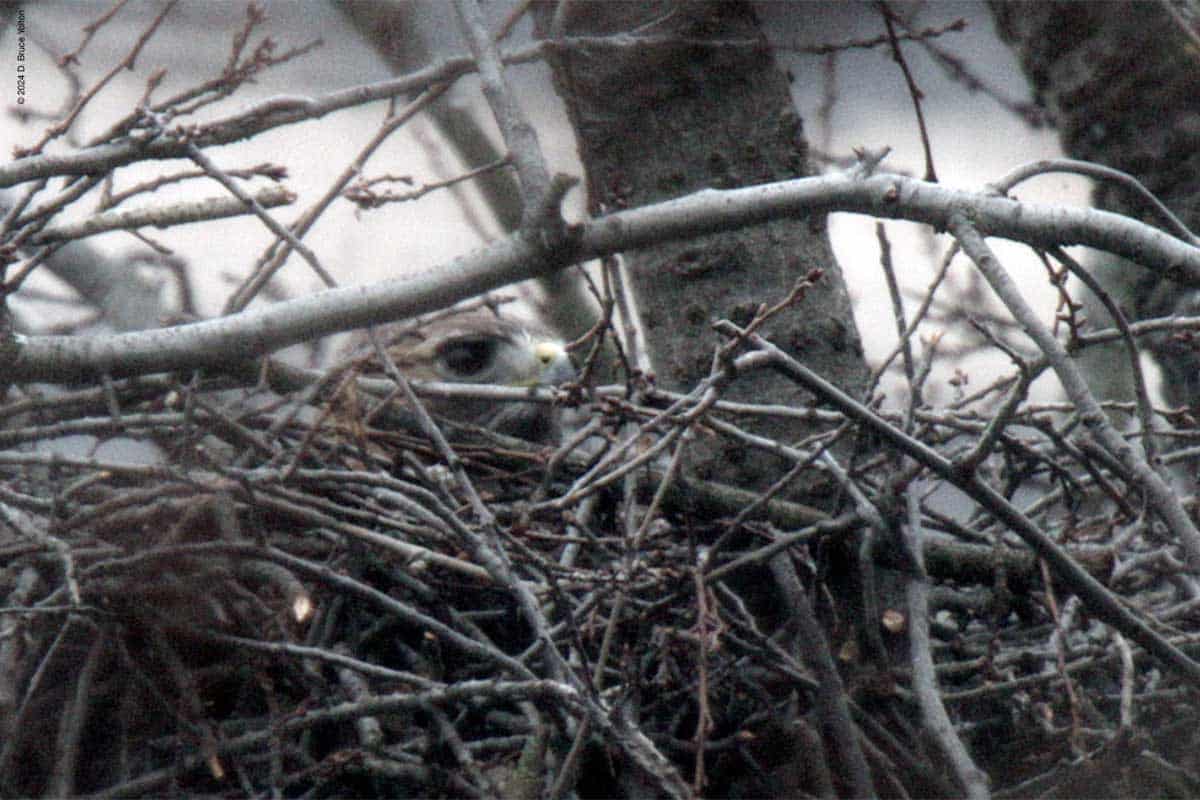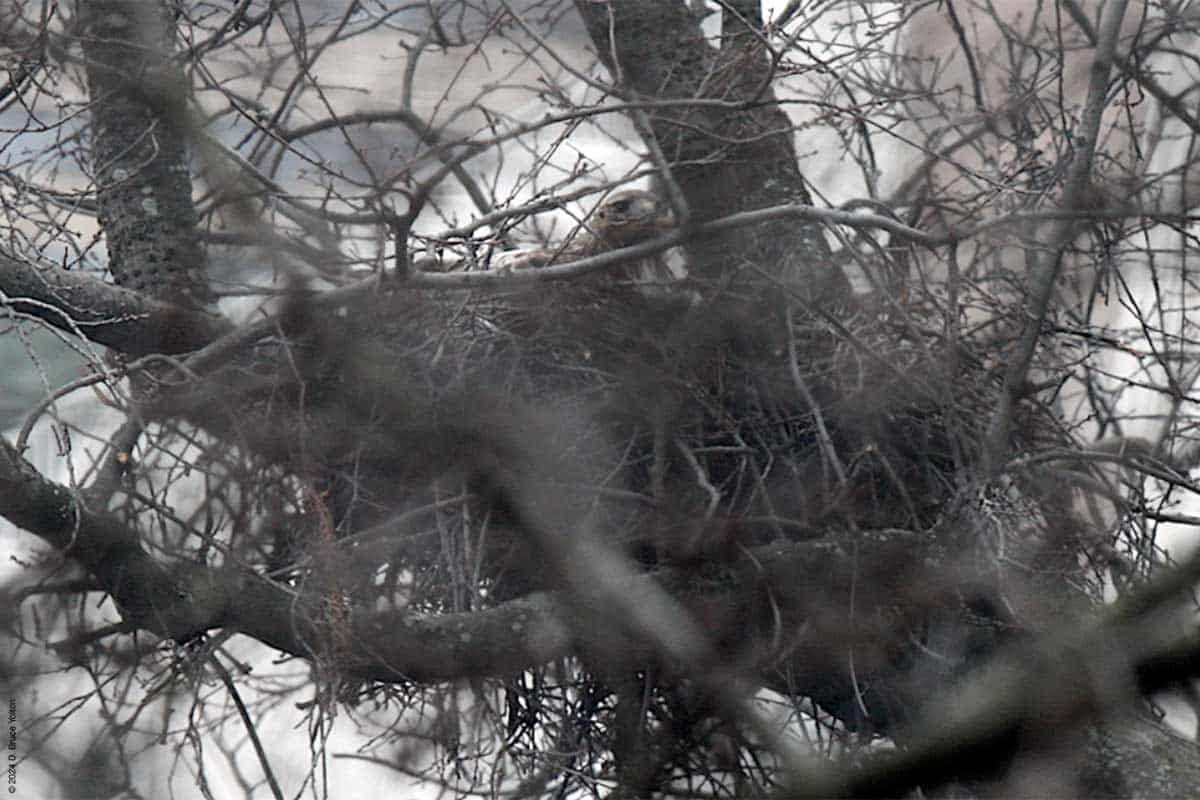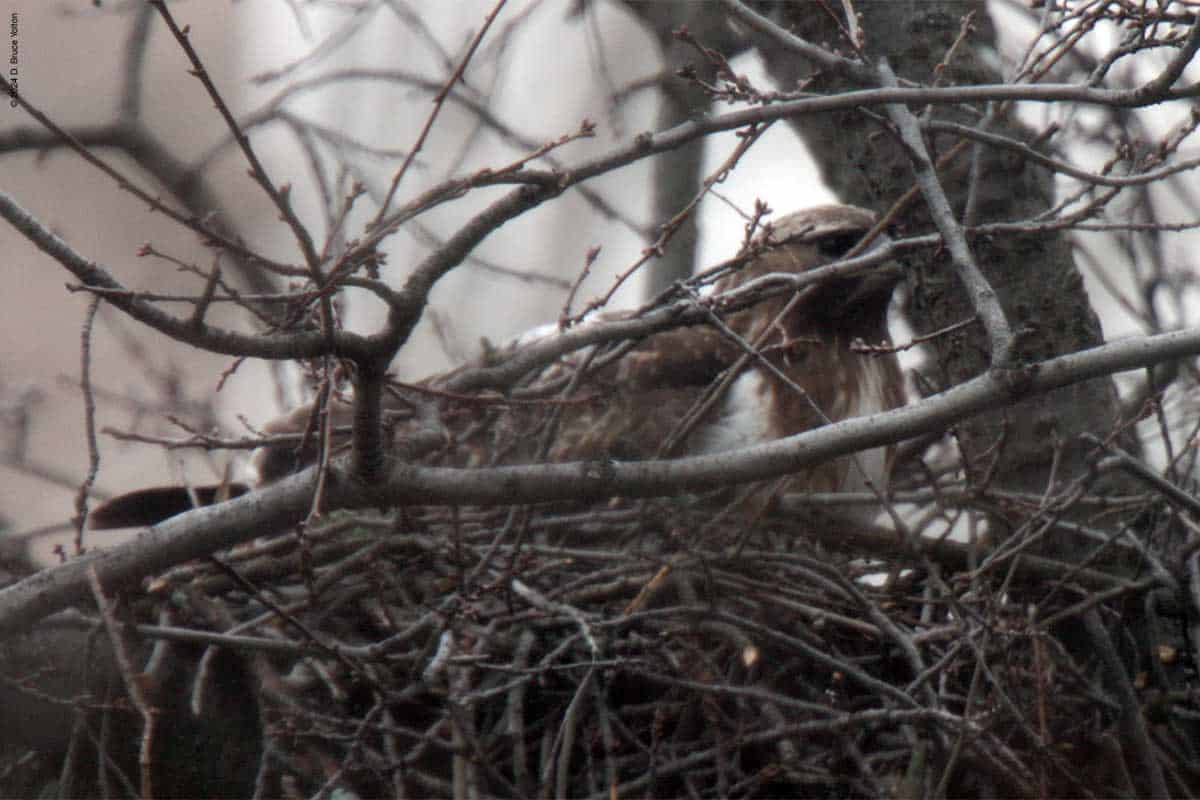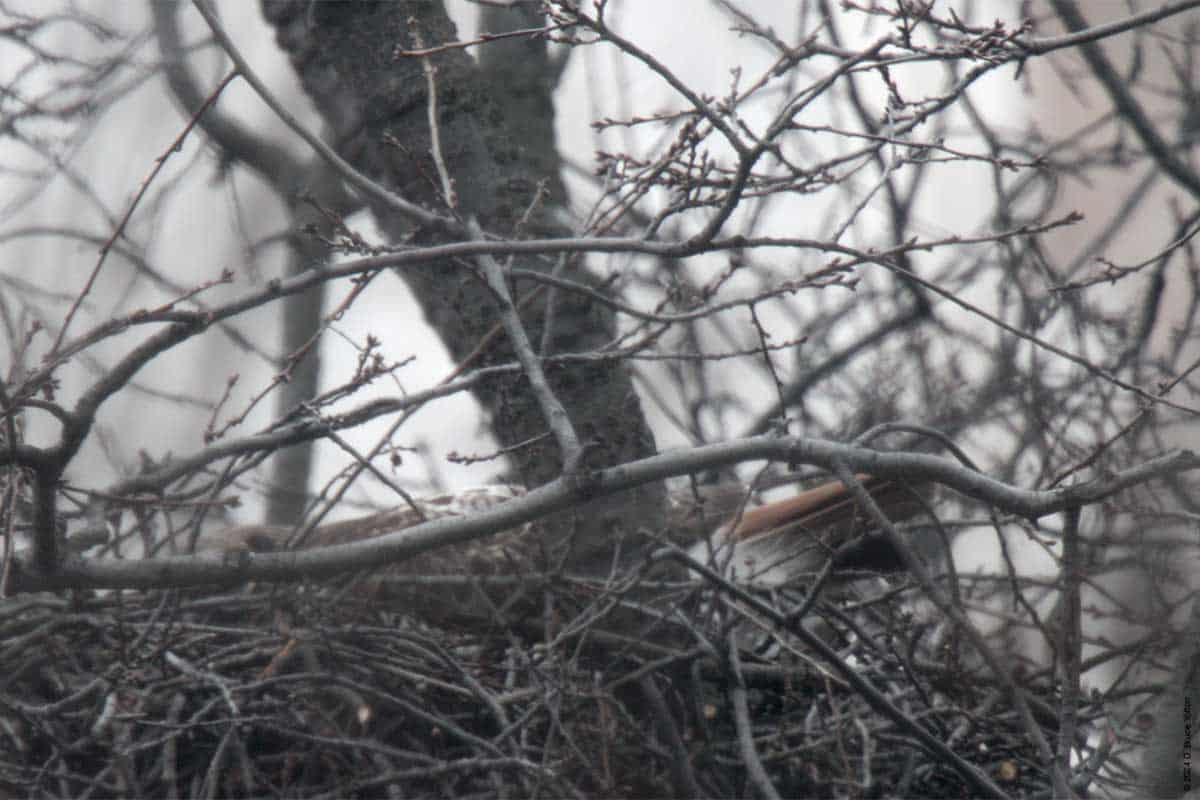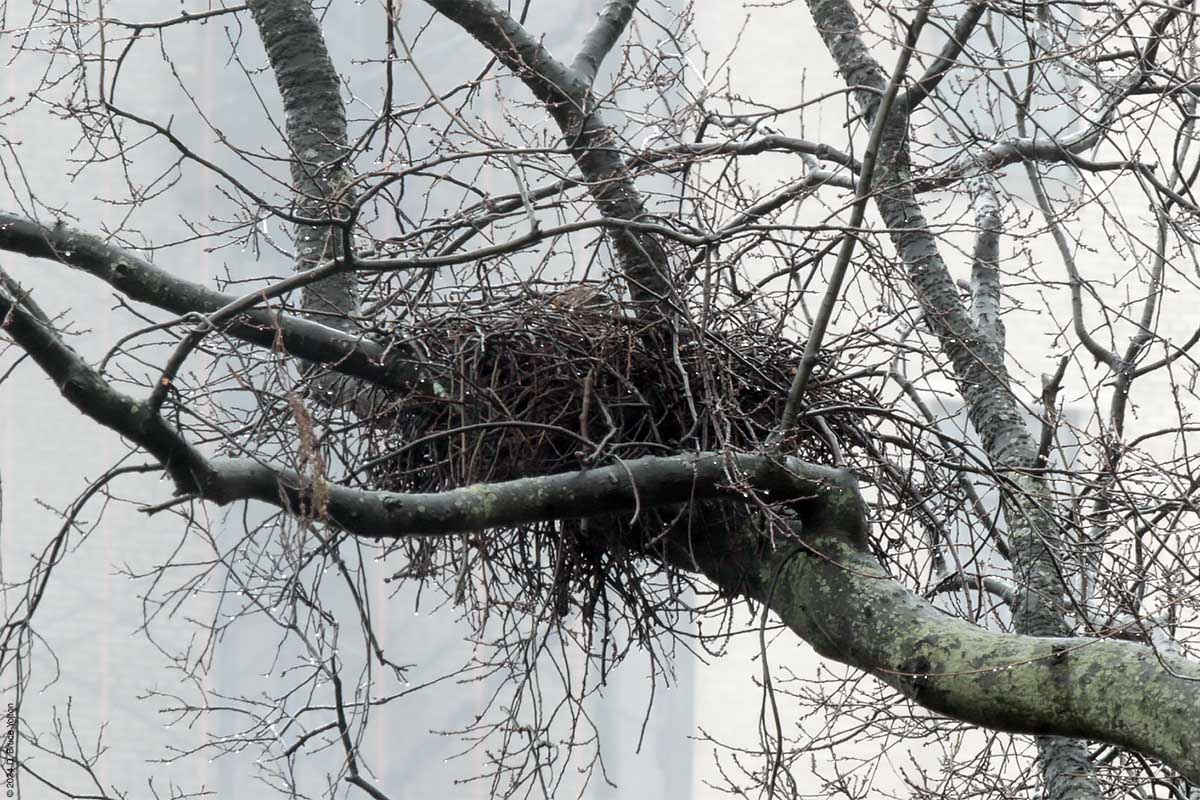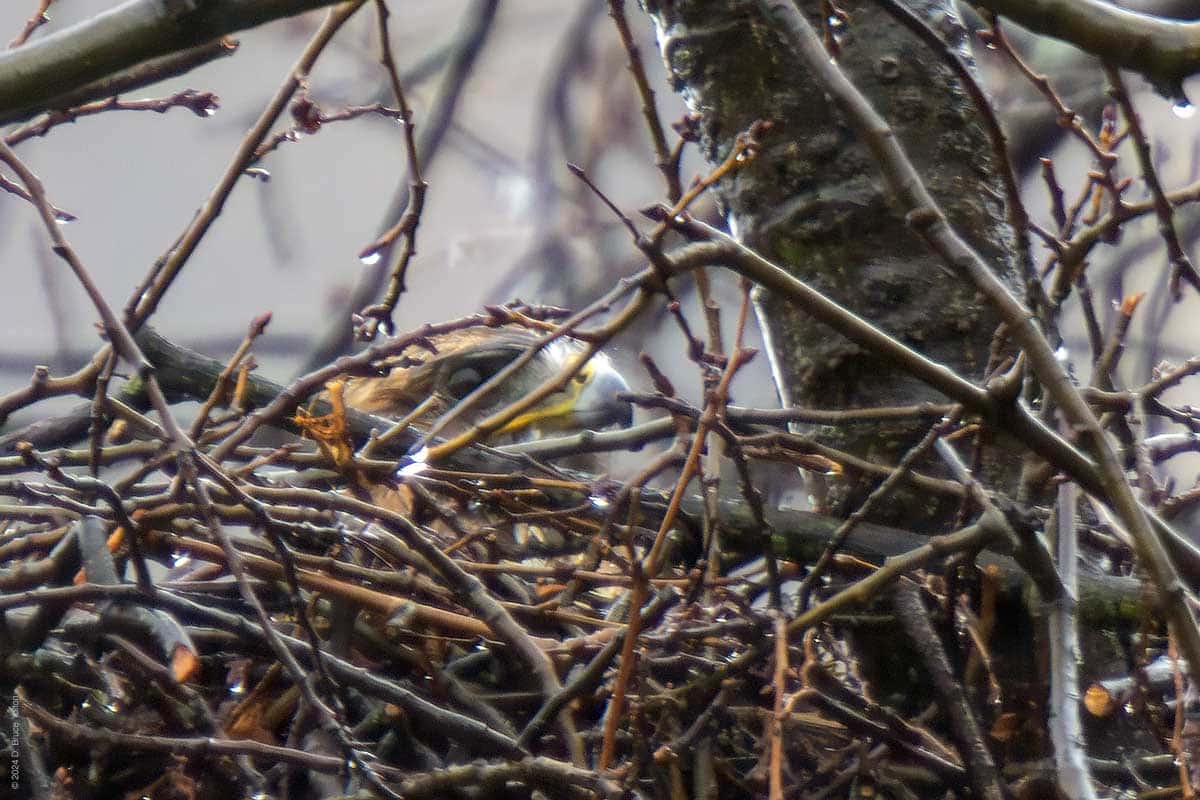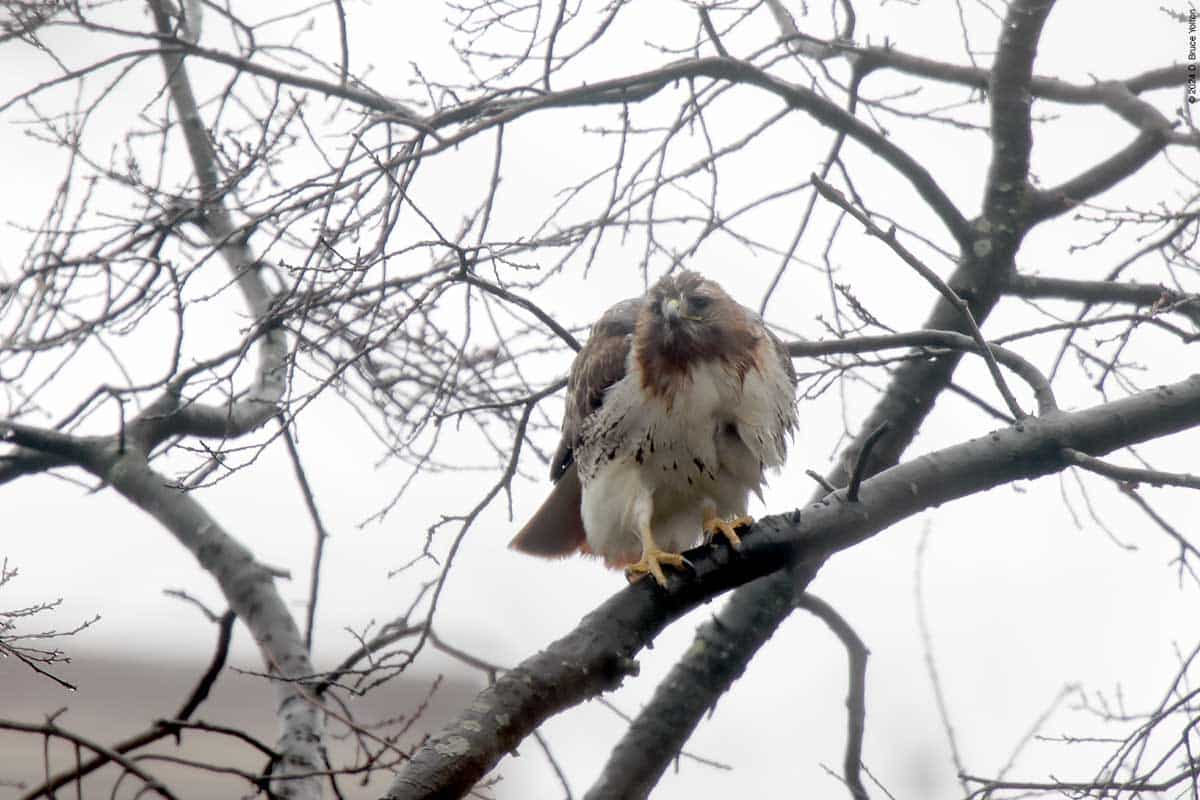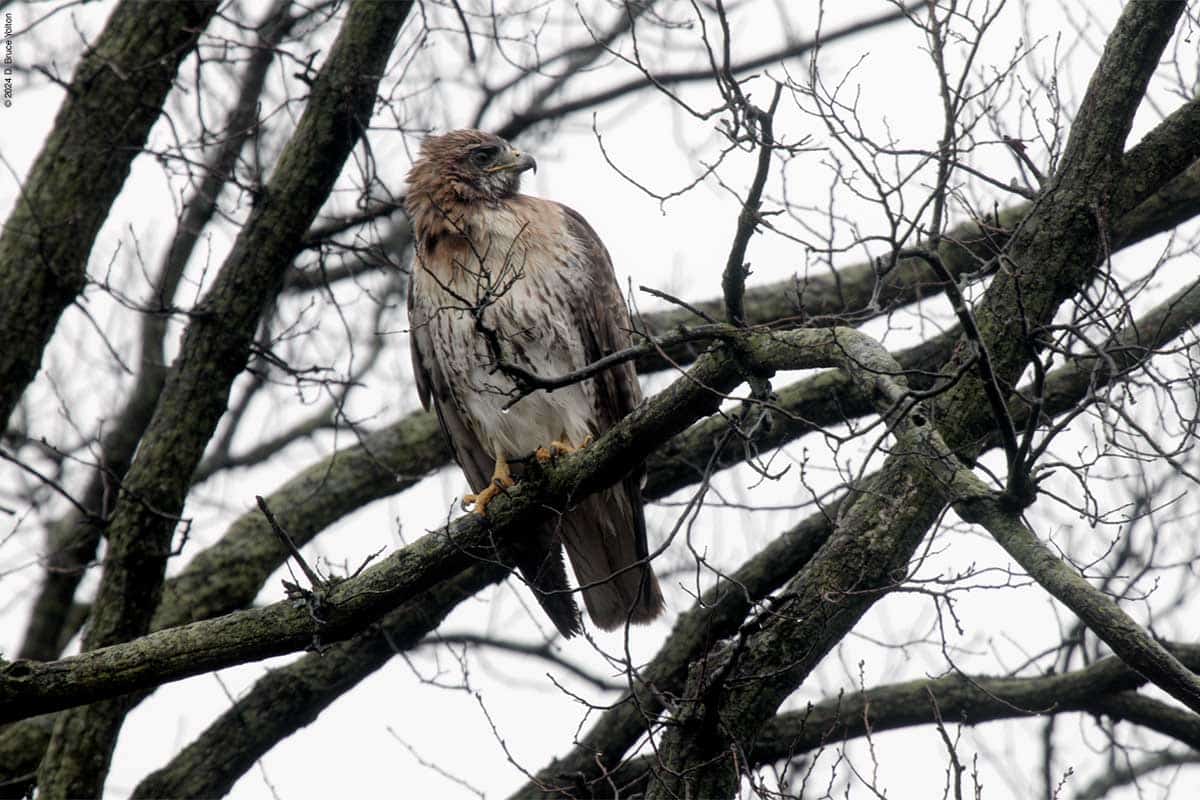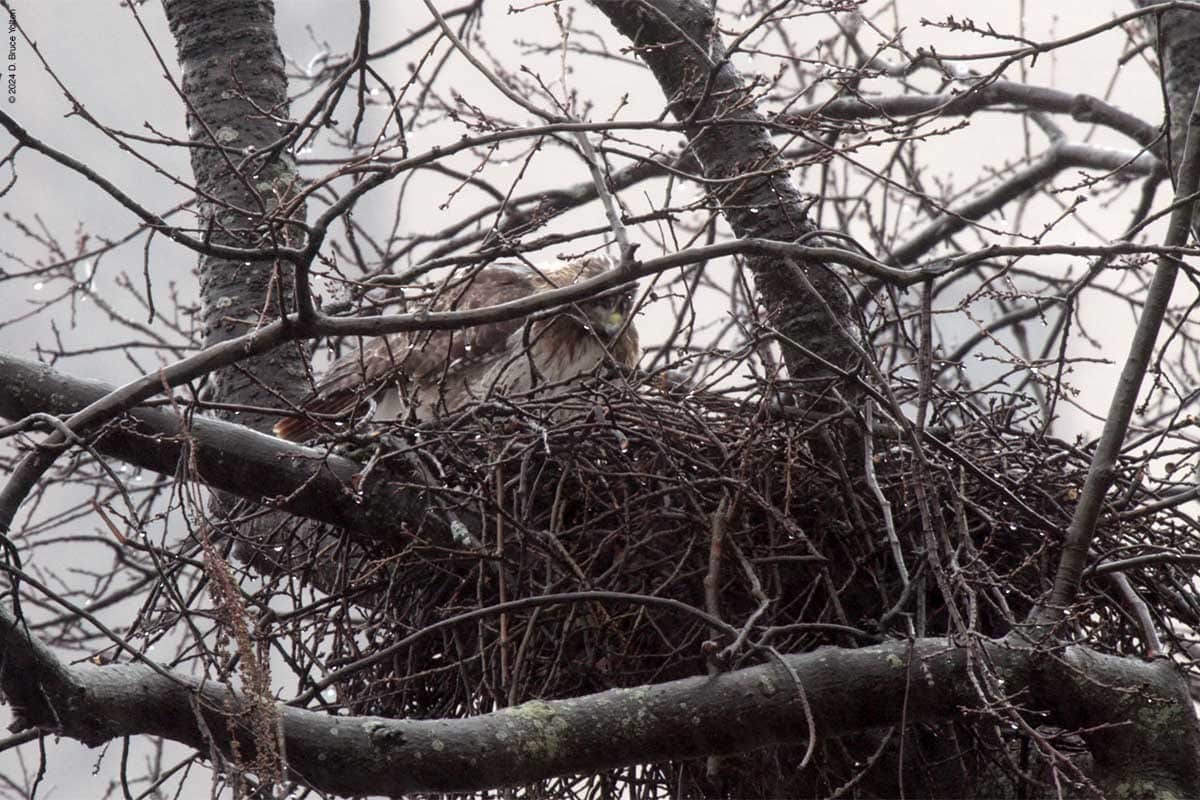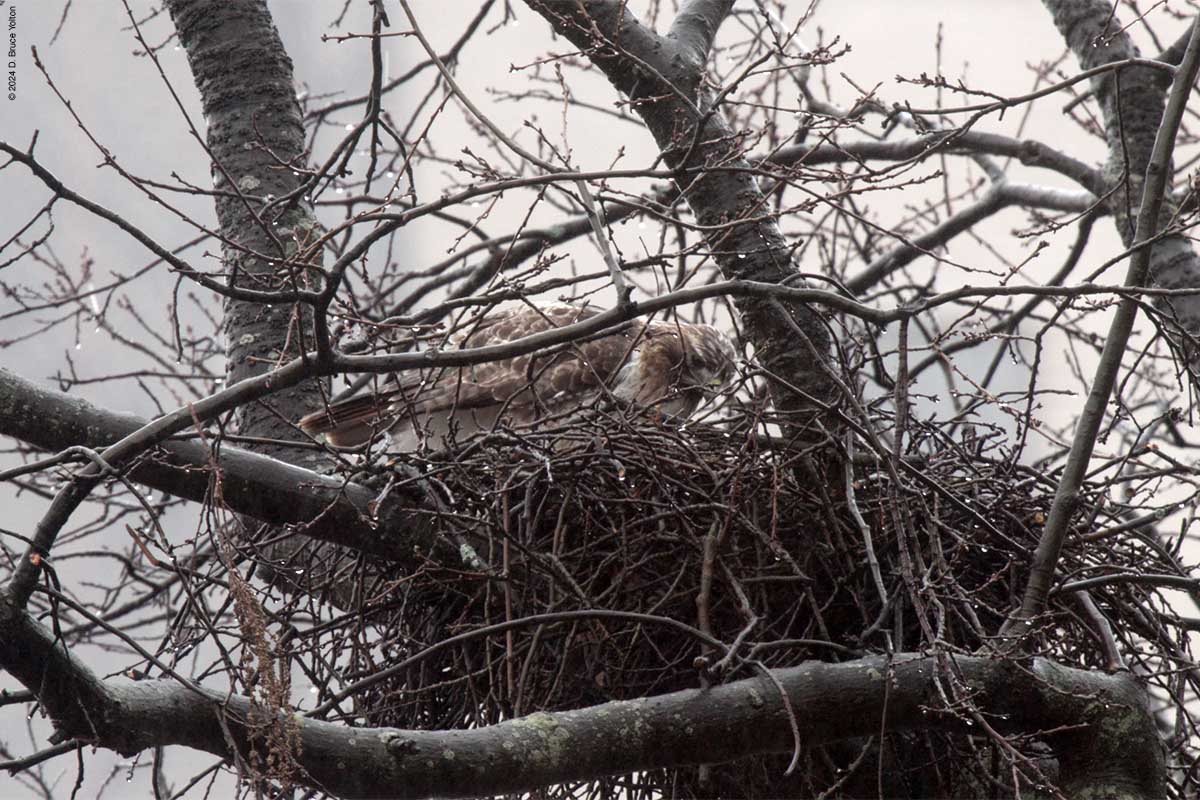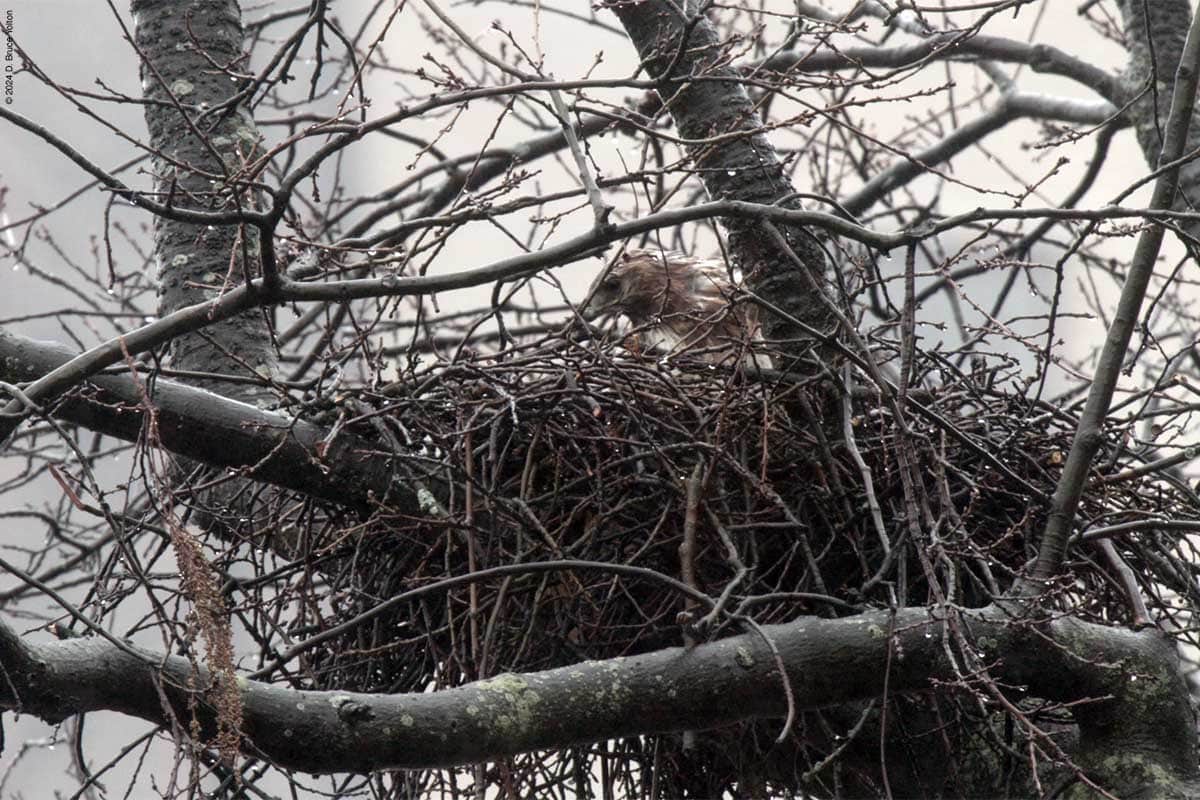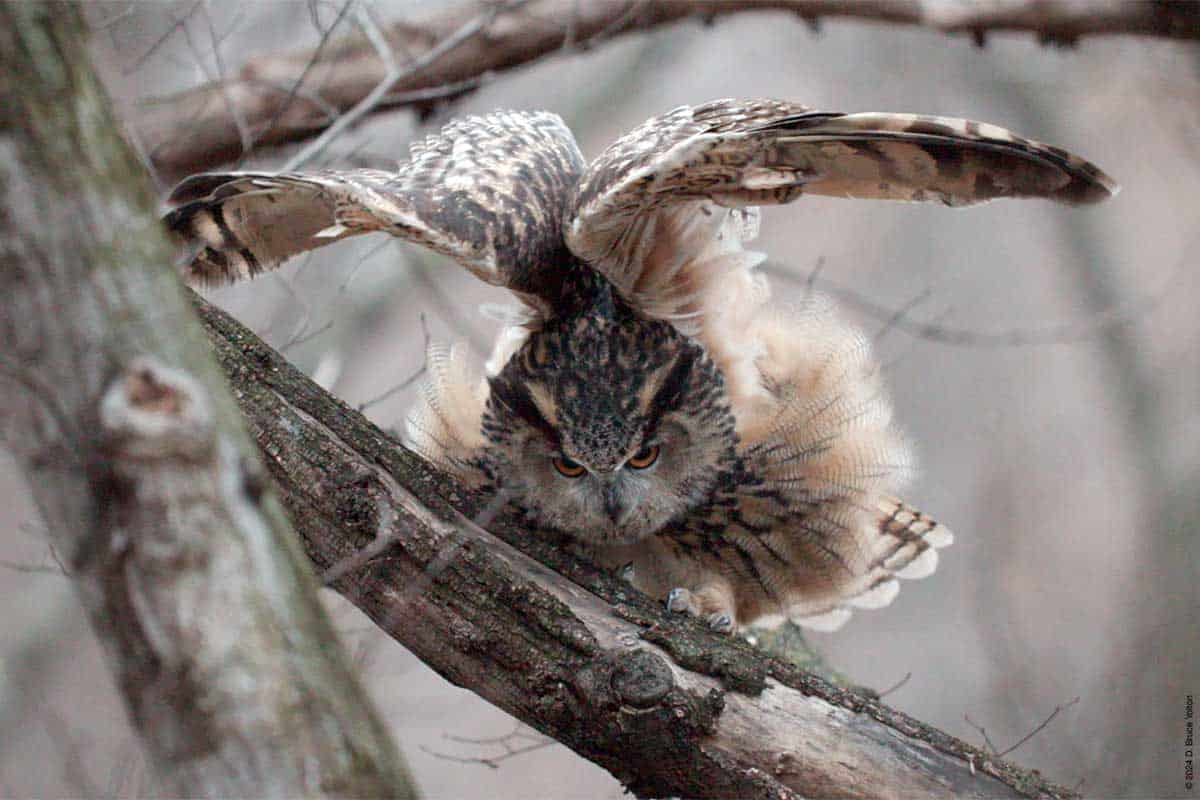St. John, then Wild West
My afternoon of bird watching started at The Cathedral Church of St. John the Divine. Over the last few days, many birders have watched a pair of Common Ravens (not so common for Manhattan) work on a nest on the shoulders of St. Andrew. (This is the site of a long time Red-tailed Hawk nest that was abandoned when construction of a building started nearby. The pair moved to another spot on the Cathedral and eventually moved to the Columbia University campus.)
So, when I looked a the nest, I was very, very surprised to see a young Red-tailed Hawk sitting in the nest. It will be interesting if the ravens reclaim it, or if they will move. (Update: Birders report the ravens have reclaimed the nest.)
Afterwards, I went down to 102nd and Fifth Avenue to look for the pair that had been there all winter. I could not find them. Others have also lost track of them. They may have a new nest location but I couldn’t find it. This is a real mystery, as they had been seen copulating often on a building at 104th and Fifth Avenue.
Lastly, I went to see the Wild West Playground hawks. They had an exchange (switching brooding duty) before I had my camera out, so I only go pictures of one of them hunkered down on the nest.
